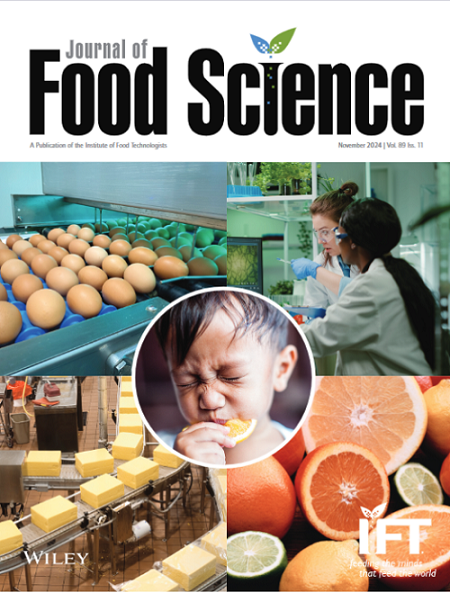Preparation and Characterization of Low-Saturated Fat Margarine Through Enzymatic Interesterification: A Study on Physicochemical Properties, Crystalline Morphology, and In Vitro Digestive Behavior
Abstract
With growing health awareness, low-saturated fat margarine is increasingly favored by consumers. Compared with the traditional modification process, enzymatic interesterification is an ideal means of modifying fats and oils due to its advantages of high selectivity, mild reaction conditions, and no production of trans fatty acids. In this study, five base oils were prepared by enzymatic interesterification of cottonseed oil (CSO) and palm stearin (PS). The enzymatic interesterification blended-based margarine (IB-M) was obtained by mixing base oil, emulsifier, and water. By observing the morphology and comparing the solid fat content, fatty acid and triglyceride compositions, 7:3 (CSO:PS) was finally selected for the preparation of IB-M, which had 11.56 ± 0.56% solid fat content at 20°C, 36.71 ± 0.02% fatty acid, and 1.15 ± 0.04% S3-type triglyceride. The analysis showed that the β′ of IB-M was 59.49 ± 1.1%, which was significantly higher than that of the commercially available margarine (CM) (50.39 ± 0.9% and 50.04 ± 1.4%, p < 0.05). The analysis of the melting and crystallization properties indicates broadened peaks, reduced peak areas, and the presence of finer crystalline particles, suggesting improved melting behavior and enhanced plasticity. The rheological properties also indicated that the viscoelasticity of IB-M was less, and a smoother mouthfeel could be experienced in the mouth. Analysis of the in vitro simulated digestion process showed that IB-M showed a similar trend of change as CM, but had a higher content of released FFA (64.99 ± 0.9%), which made it easier for the human body to digest and absorb. Therefore, IB-M enhances CSO's value and supports nutritious functional products.





 求助内容:
求助内容: 应助结果提醒方式:
应助结果提醒方式:


